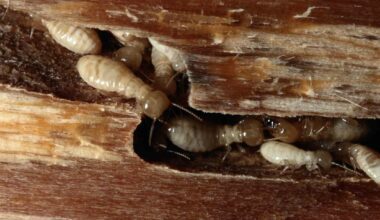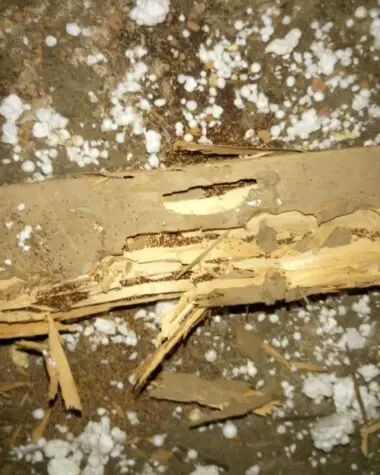Known as silent destroyers, termites can damage wood and take your house down without notice. Termites can silently attack your attic, walls, basement, ceiling, or anywhere wood is present. They eat wood as their main food source.
You can never tell that termites have destroyed wood unless you open it to reveal the terrible damage. They threaten structures, and the worst part is that it is difficult to see what’s going on underneath your wooden walls. You will only notice their infestation once the damage grows worse.
If you have an infestation-related problem caused by termites, this article will give you an eye view of how a termite attacks a home and how you can prevent termite infestation.
Termites and wood
Termites eat wood, and in fact, they are hungry for the cellulose in wood. Cellulose is the most abundant organic compound in nature and is found in most plants and trees. It is also present in many products we use daily.
This is why it’s common to find termites eating clothes, cardboard, paper products, and other plant byproducts. To termites, cellulose is very nutritious. They can turn cellulose fibers into a nutritious material that they can eat all year round.
There are two most common species of termites. First is the Subterranean termites that prefer to eat soft fibers of Springwood. Wood eaten by subterranean termites will become like a honeycomb with sections that may contain dirt and fecal materials.
The second species is the Drywood termite. They eat dry wood, the type of wood found inside homes. These termites do not make contact with the soil and take water from the wood they consume, no matter how dry it is.
How fast can termites eat wood?
A single termite worker can live for about two years. The total amount of wood consumed in a day for one termite is not very much, but when they attack wood as a colony, you will surely find significant damage. And the worst part, they often hide when they attack a home.
The speed at which termites can eat wood may depend on how large the colony is and how strong or how dense the wood is. At the rate of a single termite, it could take 3,144 years to eat a 1,000-square-foot home.
But don’t celebrate yet, because they do not live and attack alone. A single termite colony can grow in numbers of up to 15,000,000 and survive for years. So imagine the damage and how fast they can eat your home until nothing is left.
You may think that your home looks fine and pristine, but as time passes, the damage made by a termite colony would be so huge. They eat slowly but with an insatiable hunger for the wood.
Termite damage to property
It is very difficult to determine how much damage to the property a termite infestation can give. Usually, the rate of destruction in wooden structures and furniture depends on the type of wood and how many termite colonies are present.
Additionally, you might have to base it on a few factors like the value of your home, the part of the home or area that was damaged, and the severity of the infestation. Only an expert termite control professional can help you estimate the possible damage to your property in case of a termite attack.
The most vulnerable areas in your home
You can easily expect termites to attack any wooden structure on your property. But they target the weakest part of your home. They consider the status and condition of wood to make sure it is the best piece to feast on.
The most vulnerable parts of your home are untreated wood and non-pressure-treated wood. This may include slab foundations, any wood that touches dirt in the home, and crawlspaces.
Preventing termite damage in a home
If you have a wooden home or foundation, there is no time to waste. There is a huge chance that an infestation is coming, and your home is truly vulnerable when left untreated. Luckily there are ready-made and proven effective treatments against termites.
There are numerous termite control chemicals available in hardware stores. You can use termite bait or liquid treatments to prevent termites from getting into your home and causing much damage.
You must also contact a professional for prevention, control, and infestation inspection. There are few procedures to follow, but the processes and results are truly time-consuming and helpful.
Conclusion
Termites are insatiable, vicious creatures that eat wood for its cellulose content. They also consume cellulose from other wood byproducts like paper, clothes, cardboard, etc. If you are worried about a termite infestation, contact a professional immediately.
A professional will help you kill termites, protect your home, and guide your investment for future infestations. You might need to pay a hefty fee for professional help but trust that this is a small price to pay for infestation protection.
But if you want to do the inspection, prevention, control, and treatment by yourself, you can learn more by reading relevant resources about wood infestation. Discover the causes, triggering factors, and serious threats of an infestation.
You can also try these easy-to-follow DIY hacks to reclaim your infested wood and follow the step-by-step guide to save and restore your wood projects.








